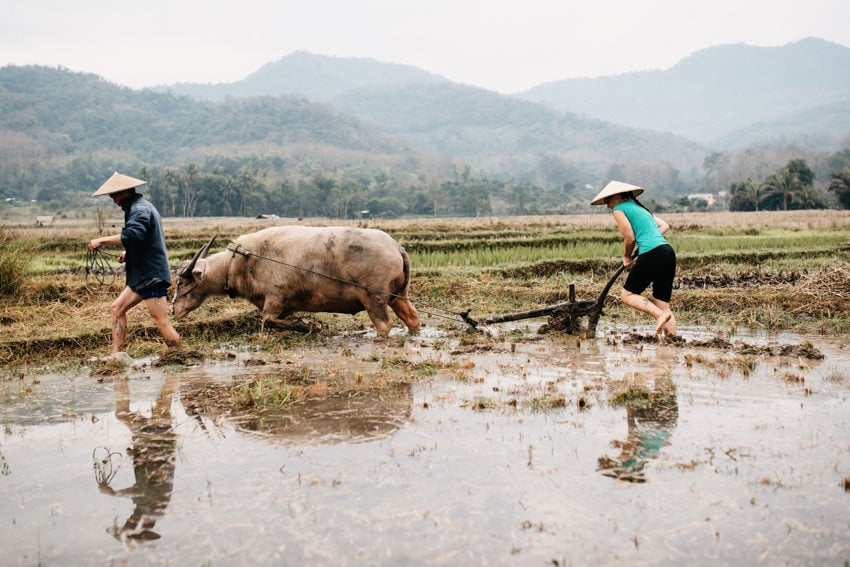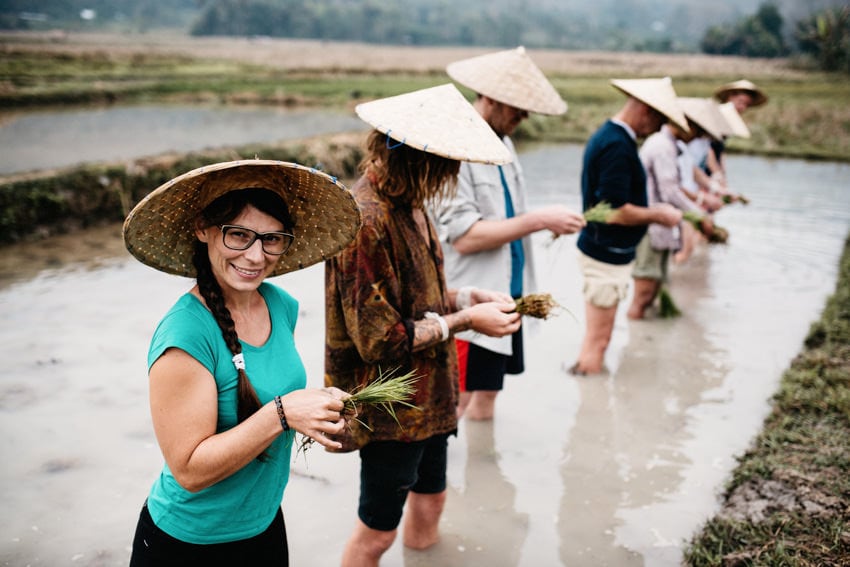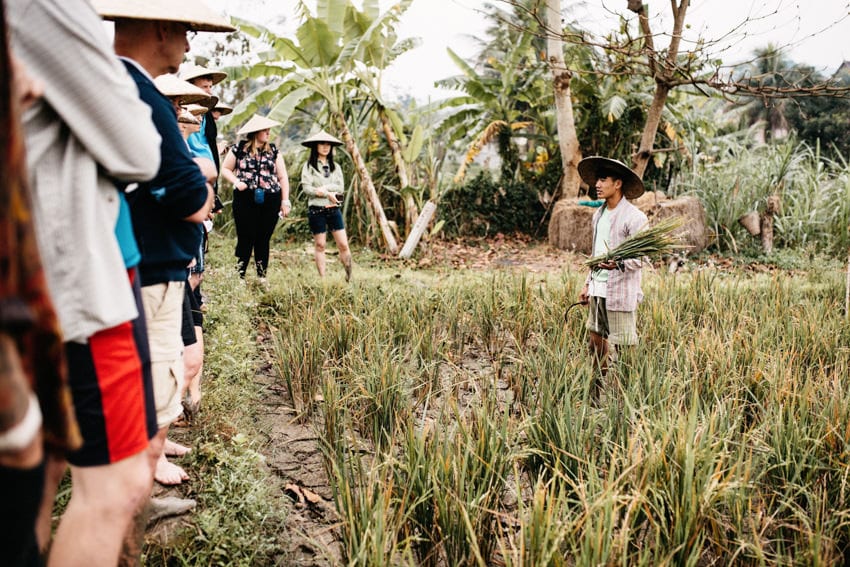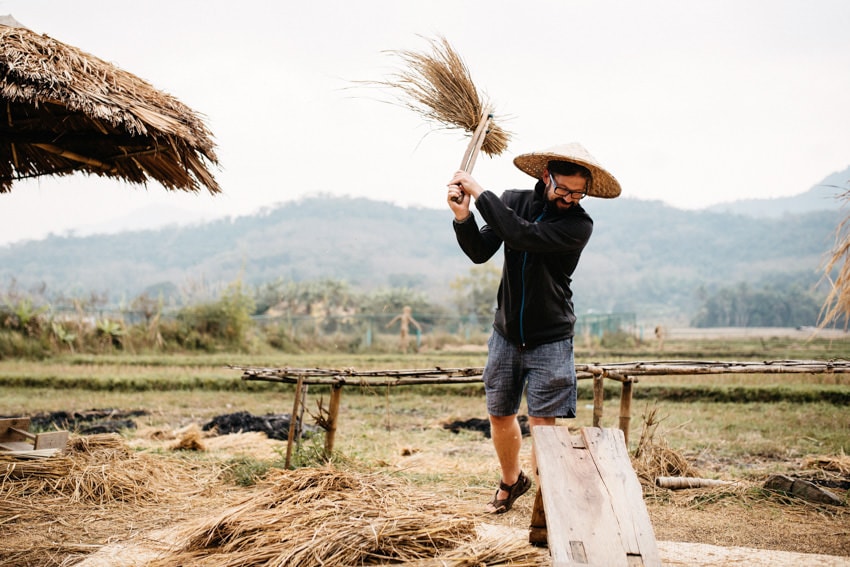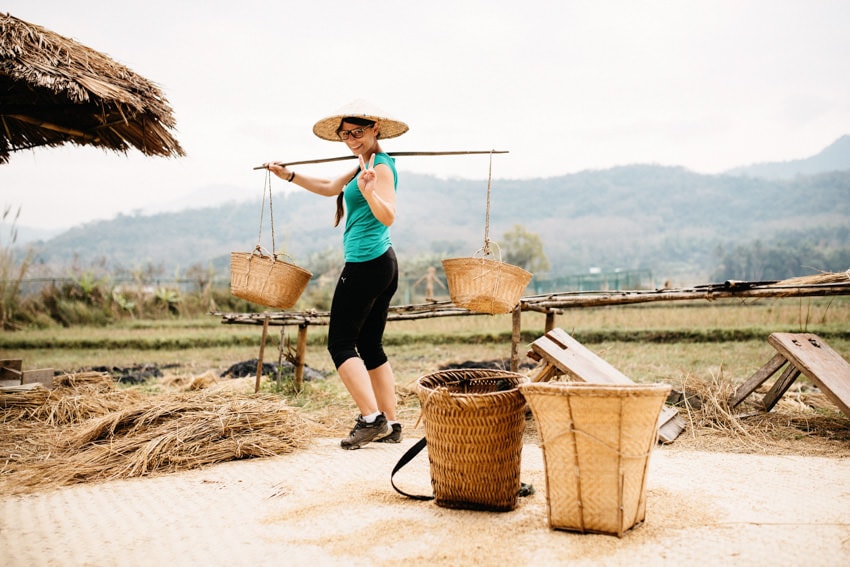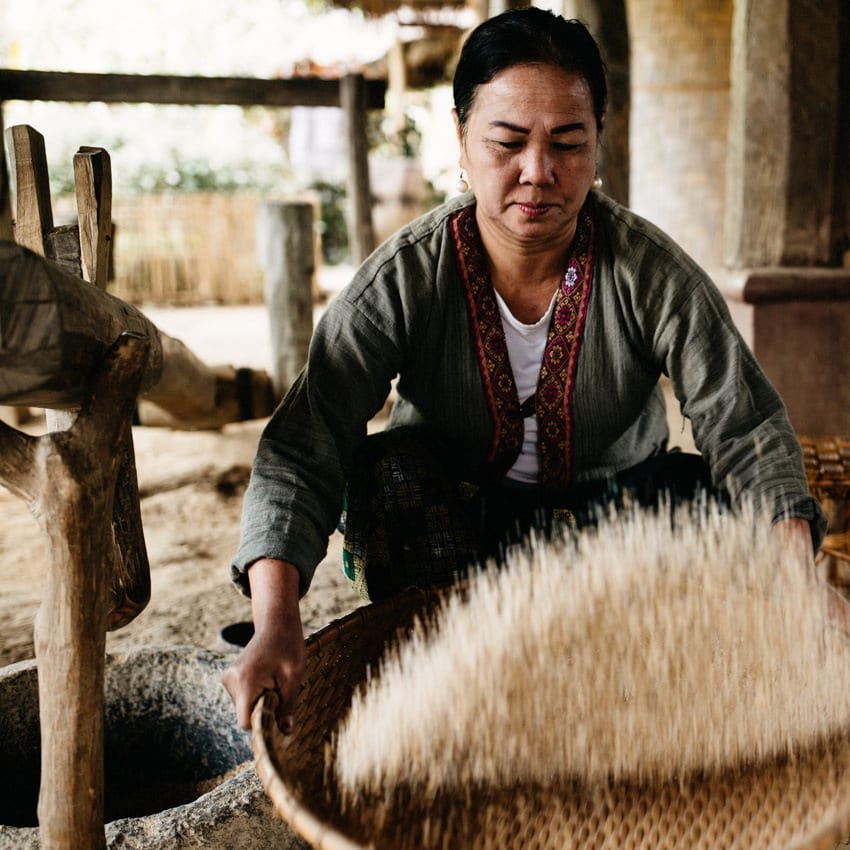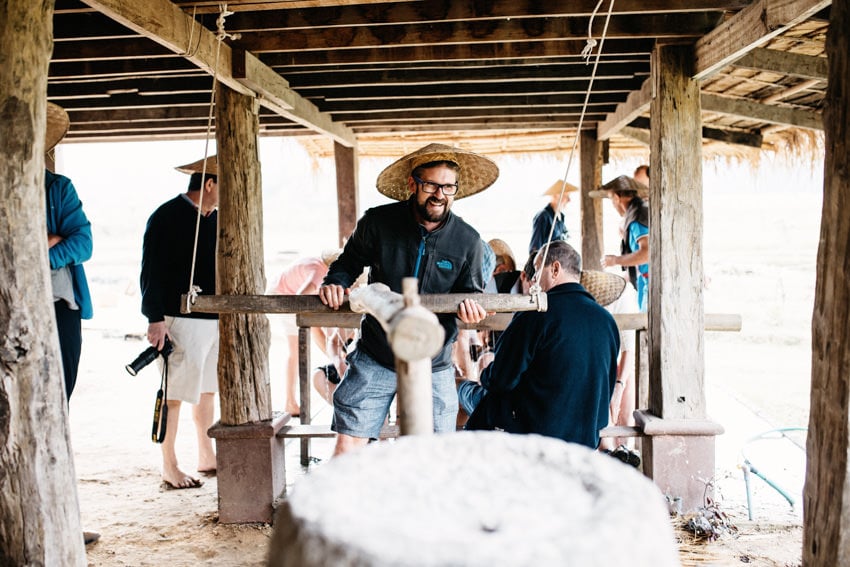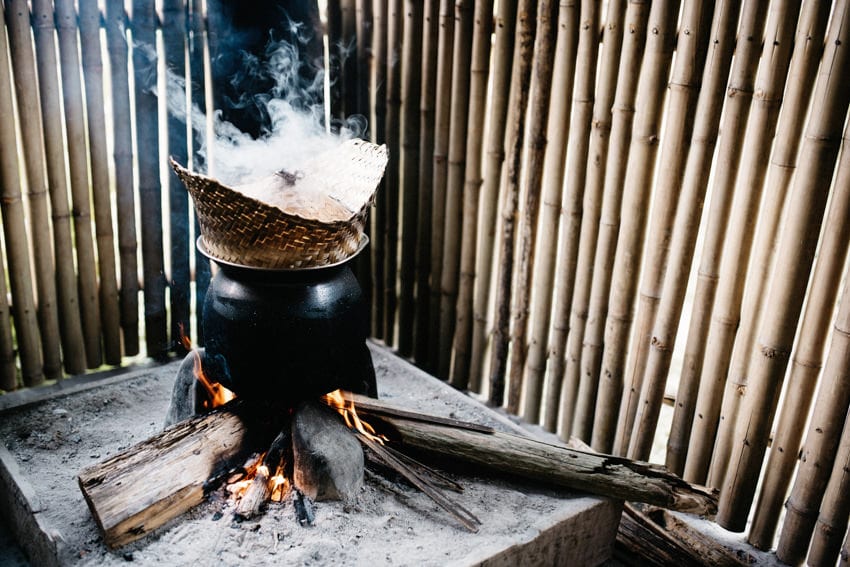While travelling through South East Asia, we passed so many rice fields. We always watched people wearing traditional hats, standing knee-deep in the water and planting one rice plant after the other. As planting and harvesting rice plays a crucial role for the economy and culture in South East Asia, we were eager to learn more about it. We found the perfect tour with the Lao Living Land Company near Luang Prabang.
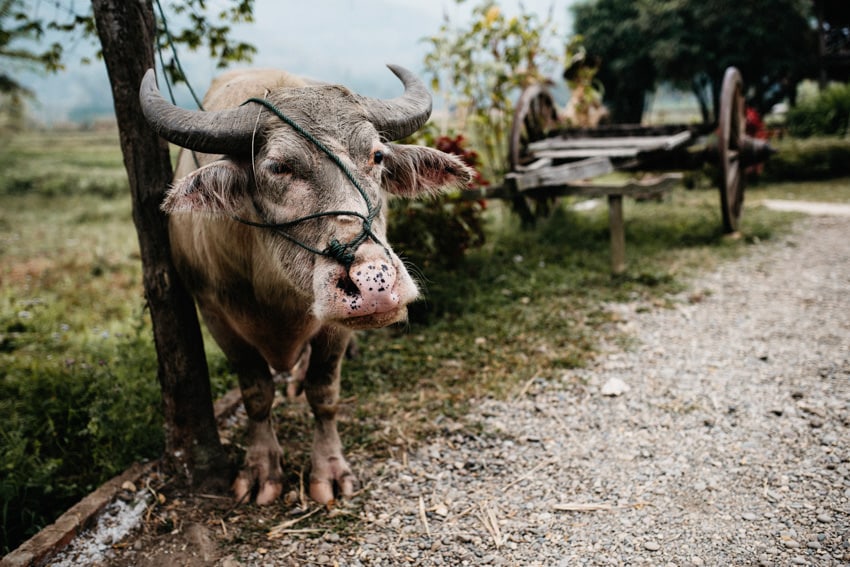
Lao Living Land is a community project – 7 families cultivate 8 hectare of land planting and harvesting 2,5 tons of rice / hectare per harvest. People with lower education levels are employed as gardeners in order to have them do what they are best at – working with their hands on the rice fields. As soon as they had paid all taxes (for the land because it is government land), they spend the income on electricity, running water and education. They teach people from the villages English to pass on the knowledge to the kids from the surrounding villages. Every afternoon, they provide free English classes and all kids can take part.
Cost of the Tour: 345,000 KIP per person
With about 35 EUR (40 USD), the tour is not necessarily cheap – we still gave it a chance as we really wanted to gain knowledge about rice plantation. As we could not find any tour similar to the one with Lao Living Land, we booked the tour and we loved it. It was one of the best tours we ever did and think it is definitely worth the money. Alternatively, you can also go there and just watch from the terrace – however, it is definitely not that entertaining and, for sure, you will not get more insights than by observing the work on the rice fields from anywhere else.
What’s included
- Pick-Up and Drop-Off at your accommodation in LP by tuk-tuk
- 3-hour Guided Tour through the rice fields (which is a real hands-on experience)
- Meals: rice tasting including happy water “Rice Wine”
- Bottled Water & Coffee/Tea
How to book
You can book the tour with some tour operators / accommodations in LP, we, however, booked it ourselves. You can send an e-mail or just call by phone. We sent an e-mail but unfortunately, haven’t received an answer quickly. Therefore, we called and booked by phone. This was equally difficult as the person on the phone barely spoke or understood English. Once we had booked by phone, we also received an answer to our e-mail. Until the pick-up time on the day of the tour, we were not sure if it will work out – but, right at the time they said we would be picked up, the driver came to get us. It is a little bit tough but still, we recommend saving the tour operator’s commission and just go ahead and book by yourself. There are several times – we said we wanted a tour in the morning, so they suggested the 9:00 AM tour.
The Rice Experience
When we arrived at the Lao Living Land company, we were friendly welcomed by our guide – who immediately gave us a typical farmer hat – and Rodolphe, the water buffalo. We met our group – which had a size of about 10 people, which was perfectly fine – and after we had all introduced ourselves, the tour started.
The tour provides an insight into all 14 steps of planting, harvesting and processing rice – including eating it, which is step 14. Firstly, we learnt how rice seeds are selected and prepared for plantation. About 10 % of each years’ harvest have to be kept aside as seeds for the next cultivation. After this preliminary exercise, it was high time to jump into the muddy rice field and start planting. We plowed the field with the help of Rodolpho – in order to prepare it for plantation. It was very funny to stomp through the knee-deep mud, being dragged by Rodolpho – Bianca really struggled not to fall into the mud because of his strength towing her. Then we planted our own little rice plants – again standing in the knee-deep mud, learnt everything about the water requirements of growing rice, how the water levels are managed via canal-systems and how rice is harvested. Then, the work on the field was done, so we washed and dried our feet again in order to continue with the next steps: manufacture the rice into different end products such as rice and rice flour.
We got to know everything about separating the rice corns from the rice plants and different types of carrying rice from the field to the village / manufacturing site. In which kind of basket the rice is transported and which “carrying”-technique is used, depends on the tribe that grows the rice. Hmong, Khmu and Laolum use different styles to transport as their villages are usually located landscapes with different conditions: mountainous, plains, sometimes with close and sometimes with no access to roads.
The tour ended with us learning how to cook sticky rice (and how to get it sticky as glue without adding glue to it while cooking), squeezing fresh sugar cane juice and eating the rice, we had previously observed being cooked.
Our Conclusion
We spend an awesome half day at Lao Living Land. Despite the tour being rather expensive (at least considering its Lao), we can totally recommend the tour. It is a real fun, educational, hands-on and eco-friendly activity – just as advertised on their website. If you love indulging into a different culture and learn how they make their living, being in the outdoors and don’t care about getting dirty, this is the right activity for you.
Our Overnight Stays in Luang Prabang
Downtown Backpacker Hostel and the City Backpacker Hostel
If both of them are available when you try to book, definately opt for the DownTown Backpackers Hostel as it is way more comfortable and has bigger rooms.

